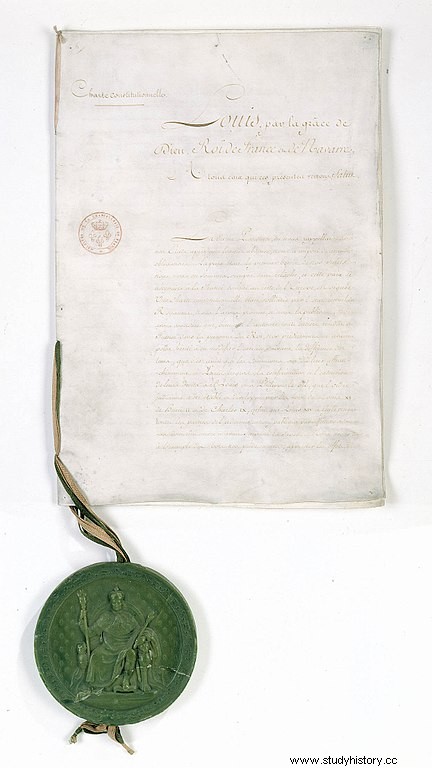On the death of Robespierre, who buried the Terror, France acquired collegial power with the Directory. But this government is constantly weakened by the royalist threat, and the lack of ascendancy of one of the Councils creates blocking situations. The conditions are ideal for a coup, organized by Sieyès, Talleyrand and carried out by Napoleon Bonaparte on 18-19 brumaire of the year VIII. The latter gradually managed to impose the Consulate, the antechamber of the First Empire (1804-1814). Indeed, Bonaparte granted himself full powers and crowned himself emperor on December 2, 1804. If the beginnings of his reign were triumphant, the rout of the Russian campaign in 1812 weakened him. The Campaign of France (1814) marks its defeat against the Coalition of the greats of Europe. Forced to abdicate, on April 6, 1814, Napoleon I st (1769-1821) is exiled to the island of Elba. The population, harassed by years of war led by Napoleon, welcomes the return of the Monarchy.
1814-1830

Characters
Charles X
Louis XVIII
Napoleon 1 st
Procedure
As soon as the exiled emperor, Louis XVIII (1755-1824), brother of Louis XVI, took the reins of power in 1814:it was the beginning of the Restoration, which was divided into two stages. The new king quickly understood that he could not deny the revolutionary and Napoleonic heritage. So he grants the French people a constitutional charter which revokes the absolute monarchy in favor of a more moderate regime. It proclaims equality, individual freedom, freedom of expression and above all freedom of the press. Two assemblies are created, the Chamber of Peers, appointed by the king, and the Chamber of Deputies, elected by suffrage.
But in the shadows, Napoleon 1 st escapes from the island of Elba, disembarks at Golf Juan on the 1 st March 1815, and returned to the capital while Louis XVIII fled to Ghent. The Empire is restored, thus signing the end of the First Restoration. The Coalition ganged up against its lifelong enemy and the Emperor suffered his ultimate defeat at Waterloo on June 18, 1815. He was exiled to Saint Helena where he perished. But this "Hundred Days" episode left traces in the image of the king, considered to be a fugitive, and revived tensions between moderate royalists, ultras and supporters of the Empire. Louis XVIII restores somehow the Second Restoration. On his death, the Count of Artois, his brother (1757-1836), took over the throne and in 1825 resumed the ceremonial of the coronation, which Louis XVIII had abandoned. Charles X, thus renamed, quickly reconsiders the powers granted to the people and suspends the freedom of the press. This return to the authoritarianism of the “ultras” provoked the popular revolution of July 1830, “Les Trois Glorieuses”, which marked the exile of Charles X.
Consequences
The Restoration of the Monarchy put an end to the Empire and reintroduced royal power to the throne of France. And if the July Revolution brings about the end of the Restoration and the exile of Charles X (1757-1836), it nevertheless maintains the monarchy in power, known as July, led by Louis-Philippe d'Orléans named Louis Philippe 1 er (1773-1850).
